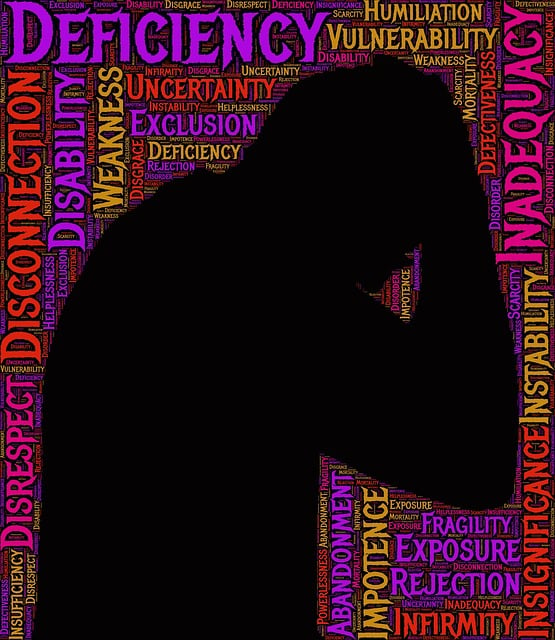Longmont Bilingual Therapy is a leading innovator in digital mental health solutions, combining technology with evidence-based therapy techniques and language support. Their apps offer personalized coping skills, mood tracking, and multilingual guidance, accessible to diverse populations, especially non-English speakers. Key features include tailored content, stress management tools, guided meditations, and virtual coaching. By integrating cultural awareness and modern tech, Longmont democratizes mental health resources, enhancing well-being through self-awareness and inclusive practices. Developers should focus on user engagement, evidence-based practices, privacy, and regular updates to create impactful mental wellness apps.
In today’s digital age, mental wellness apps are transforming access to care. “Mental Wellness App Development” explores the evolving landscape of digital therapy, focusing on understanding mental health in a connected world. We delve into the growing need for bilingual therapy apps, highlighting successful initiatives like Longmont Bilingual Therapy as a model for inclusive care. The article navigates key features of effective apps and provides best practices for developers, emphasizing the importance of cultural sensitivity and accessibility in fostering positive mental health outcomes.
- Understanding Mental Health and Wellness in a Digital Age
- Identifying the Need for Bilingual Therapy Apps
- Key Features of Effective Mental Wellness Apps
- Longmont Bilingual Therapy: A Case Study
- Building a Successful Mental Wellness App: Best Practices and Considerations
Understanding Mental Health and Wellness in a Digital Age

In today’s digital age, understanding mental health and wellness has evolved significantly. The integration of technology in therapy and self-care practices, such as those offered by Longmont Bilingual Therapy, opens new avenues for support and accessibility. Apps designed for mental wellness provide individuals with tools to manage stress, anxiety, and other common mental health concerns through various means like mental wellness journaling exercises and guidance on mood management. These digital resources are instrumental in reducing the stigma associated with mental illness, as they offer discreet and convenient access to care.
By combining evidence-based therapeutic techniques with user-friendly interfaces, mental wellness apps cater to diverse needs. They encourage users to engage in activities that foster self-awareness, emotional regulation, and overall well-being. As technology continues to advance, it is crucial for developers to prioritize ethical considerations and ensure data privacy when creating such applications. This approach will help maximize the benefits of digital tools in promoting mental wellness while mitigating potential risks.
Identifying the Need for Bilingual Therapy Apps

In today’s diverse society, Longmont Bilingual Therapy apps are becoming increasingly essential to bridge the gap between mental health services and a wide range of communities. With a significant portion of the population speaking languages other than English, there’s a pressing need for accessible therapy solutions that cater to these linguistic needs. Traditional therapy often poses barriers for non-English speakers, leading to underutilized mental wellness resources within these communities.
Longmont Bilingual Therapy apps offer a promising approach by providing coping skills development and mental health education programs designed in multiple languages. This not only enhances accessibility but also improves patient engagement and outcomes. Moreover, such apps can play a crucial role in risk management planning for mental health professionals by offering real-time language support during sessions, ensuring effective communication and fostering a more inclusive therapeutic environment.
Key Features of Effective Mental Wellness Apps

Effective mental wellness apps should incorporate a suite of key features designed to support and promote user well-being. One of the central components is personalized content tailored to individual needs, whether that’s through interactive exercises, educational resources, or coping strategies. These apps often include tools for tracking moods, stress levels, and progress over time, enabling users to gain insights into their mental health patterns. Additionally, integration of Longmont Bilingual Therapy techniques can be highly beneficial, providing multilingual support and accessible therapy sessions to diverse user bases.
Another vital aspect is the inclusion of Mental Wellness Coaching Programs Development within the app itself. This can take various forms, such as guided meditations, mindfulness practices, or even virtual coaching sessions with certified professionals. Moreover, apps should foster Self-Care Routine Development for Better Mental Health by offering customizable routines and reminders to encourage consistent self-care practices. Through thoughtful design, these features collectively contribute to enhancing users’ mental health literacy and supporting their long-term well-being, often as part of a comprehensive Mental Health Education Programs Design.
Longmont Bilingual Therapy: A Case Study

Longmont Bilingual Therapy is a remarkable case study highlighting the power of language and cultural awareness in mental wellness app development. This innovative therapy platform caters to a diverse user base by offering services in multiple languages, ensuring accessibility and inclusivity. By incorporating self-awareness exercises and promoting open communication, the app fosters an environment where users can build resilience and gain a deeper understanding of their thoughts and emotions.
The success of Longmont lies in its ability to combine traditional therapy techniques with modern technology, targeting specific aspects of mental health awareness and well-being. Through interactive features and personalized feedback, users experience improved confidence boosting strategies tailored to their unique needs. This case study serves as a compelling example of how language-focused apps can break down barriers, revolutionize access to mental health resources, and positively impact individuals’ lives.
Building a Successful Mental Wellness App: Best Practices and Considerations

When developing a mental wellness app, it’s essential to prioritize user experience and evidence-based practices. Incorporate features that foster engagement, such as personalized dashboards, interactive exercises, and gamified elements designed to enhance coping mechanisms. Longmont Bilingual Therapy has shown that catering to diverse linguistic needs can significantly broaden the app’s appeal and efficacy.
Best practices include integrating social skills training modules to improve user connections and support groups, ensuring data privacy and security for sensitive information, and incorporating risk assessment tools to monitor users’ mental health progress. Additionally, confidence-boosting affirmations and positive reinforcement mechanisms can empower users in their journey towards better mental wellness. Regular updates based on user feedback and the latest research in mental health are also vital to creating a successful, long-lasting app.
The digital age presents a unique opportunity to enhance mental wellness through innovative app development. As highlighted by the case study of Longmont Bilingual Therapy, creating apps that cater to diverse linguistic needs can significantly improve access to care. By incorporating key features like personalized content, secure communication, and engaging therapy tools, developers can foster effective mental health support. Following best practices, including user-centric design and regular updates based on user feedback, ensures successful outcomes. Embracing this approach not only benefits individuals seeking mental wellness but also contributes to a more inclusive and accessible digital landscape for all.














